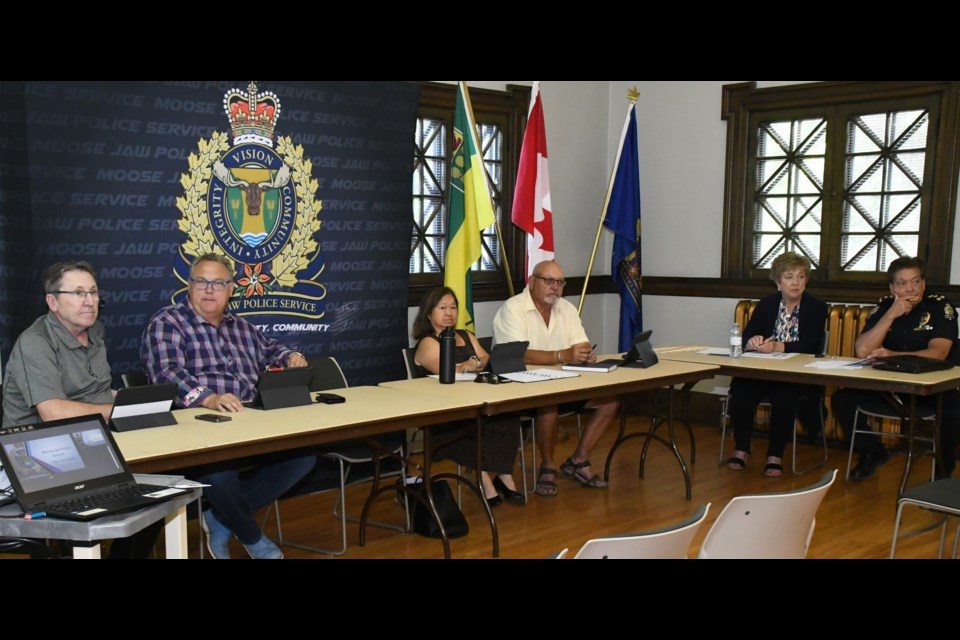For the first time since 2019, the Board of Police Commissioners held an open house-style public meeting to give residents a better understanding of the work officers are doing today.
A handful of residents attended the June meeting at the library, where the Moose Jaw Police Service discussed law enforcement-related governance, crime data, its strategic priorities, and its crime prevention unit, internet child exploitation (ICE) unit, Victim Services, tactical response team, Police and Crisis Team (PACT) units, and graffiti removal and prevention teams.
Governance
Police Chief Rick Bourassa explained that the board oversees the MJPS and develops its budget, while the Saskatchewan Police Commission is the next level of governance. The public complaints commission is after that and gives Saskatchewanians the ability to lodge concerns about their policing agency.
Furthermore, there is the provincial serious incident response team (SIRT), which an agency would call if a death occurred in police custody, and so far, the MJPS has not needed SIRT’s services, he continued. Meanwhile, courts are another level and can tell police agencies to do things differently.
The municipality also plays a role, although it cannot say how policing should work, said Bourassa. Instead, it appoints board members, gives funding, and provides suitable buildings.
“The message in this province is that policing is overseen at so many different levels, and it needs to be, and we welcome that and we work closely with all those governing bodies on a daily basis,” he added.
In-house staffing data
Within the MJPS, there is one police chief, 63 officers, 12 special constables and 11 civilian support staff, data shows. Meanwhile, the agency has a police officer rate of 190 per 100,000 people, placing it fourth out of seven Saskatchewan cities.
Furthermore, the police service has four provincially funded members with the Combined Traffic Services Saskatchewan (CTSS) unit, who patrol provincial highways and issue tickets. These officers spend 70 per cent of their time in the region and 30 per cent in the community.
Also, the agency has two PACT units, each with one officer and one mental health worker. These teams provide services within a 100-kilometre radius of Moose Jaw.
By the numbers
Moose Jaw’s crime rate in 2021 — the most recent data — totalled 10,483 incidents, which placed it ahead of Weyburn, Estevan, Regina and Saskatoon but behind Prince Albert, data shows.
“We are not inconsistent with other Saskatchewan municipalities,” Bourassa said.
Meanwhile, the community’s crime rate has hovered around the same level since 2017, with the crime rate that year at 9,595 incidents.
One reason crime rates are increasing is because society is changing, specifically, civility is decreasing and people are more accepting of violence to solve problems, said Bourassa.
This increase is reflected in the community’s crime severity index (CSI) score, which stood at 127 in 2021 versus 107 in 2017, data shows. This score placed Moose Jaw ahead of Weyburn, Estevan, Regina and Saskatoon but behind Prince Albert.
Bourassa noted that while data for 2022 isn’t available yet, the police service believes the community’s crime data and CSI likely increased since people are not getting along as in the past. Moreover, police are seeing more use of weapons and firearms in situations, which lead to injuries.
In 2022, the MJPS received 19,143 calls for service, of which 25 per cent were for crime and the rest for other community issues, the chief said, adding the agency expects those numbers to increase this year.
The next police board meeting is Thursday, July 6, at 2 p.m. at the Cultural Centre.




